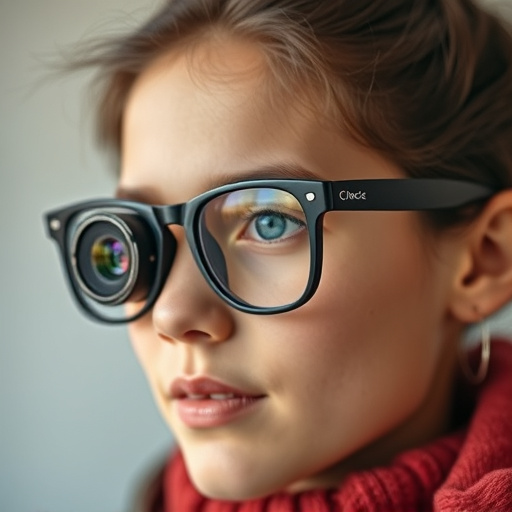Smart glasses, or AR glasses, equipped with integrated cameras offer enhanced vision through high-res sensors, wide-angle lenses, and image stabilization. With wireless connectivity, AI functionalities, and hands-free capture, these devices transform personal and professional experiences. The market for glasses with a camera built in has seen significant growth due to technological advancements and shifting consumer preferences. Pricing varies widely based on camera quality, smartglasses platform, brand reputation, and feature set.
Glasses with a camera built-in have emerged as a fascinating fusion of fashion and technology, offering hands-free photography and video recording. This innovative concept has sparked curiosity among tech enthusiasts and everyday users alike. In this article, we’ll explore the features and functionality of these smart glasses, delve into the market overview to understand the price range, and analyze factors that influence the cost of glasswear with integrated camera technology.
Understanding Glasses with Built-In Cameras: Features and Functionality
Glasses with a camera built-in, often referred to as smart glasses or augmented reality (AR) glasses, represent a significant advancement in wearable technology. These innovative devices offer more than just improved vision; they integrate advanced camera systems that enable users to capture photos and videos from their unique perspective. Key features include high-resolution sensors, wide-angle lenses, and advanced image stabilization, ensuring crisp and clear visuals.
The functionality of these glasses goes beyond basic photography. Many models boast wireless connectivity, allowing for seamless integration with smartphones and other devices. Users can remotely control the camera, view real-time feeds, and even share content instantly. Additionally, some smart glasses incorporate AI capabilities, enabling features like facial recognition, object tracking, and augmented reality overlays, enhancing both personal and professional experiences.
Market Overview: Exploring the Price Range of Glasses with Cameras
The market for glasses with a camera built-in has seen significant growth in recent years, driven by advancements in technology and changing consumer preferences. These innovative devices, often referred to as smart glasses or wearable cameras, offer users the convenience of capturing high-quality photos and videos hands-free while engaging in daily activities. The price range for these products varies widely, catering to different budgets and features.
On the lower end of the spectrum, basic models provide essential camera functionality at affordable prices. These glasses typically feature simple point-and-shoot cameras with reasonable resolution and limited storage capacity. They are ideal for casual users looking for a fun way to capture moments without breaking the bank. In contrast, high-end options boast advanced specifications, including higher megapixel counts, improved video quality, and additional features like Wi-Fi connectivity, GPS, and longer battery life. These premium models often target tech enthusiasts and professionals who require versatile and robust glasswear cameras for various applications.
Factors Influencing the Cost of Smart Glasses with Camera Technology
The cost of smart glasses equipped with camera technology can vary greatly, influenced by several key factors. One significant determinant is the quality and specifications of the integrated camera system. High-resolution cameras capable of capturing sharp, detailed images or videos will generally command a higher price point compared to basic models. Additionally, features like optical stabilization, night vision capabilities, or advanced image processing algorithms can substantially enhance the overall cost.
Another crucial factor is the smartglasses platform and its associated software. Glasses powered by more sophisticated operating systems with robust app ecosystems, such as those supporting augmented reality (AR) experiences, tend to be pricier. Furthermore, brand reputation and market positioning play a role; high-end fashion brands or companies focusing on premium features will often reflect these costs in their products.
